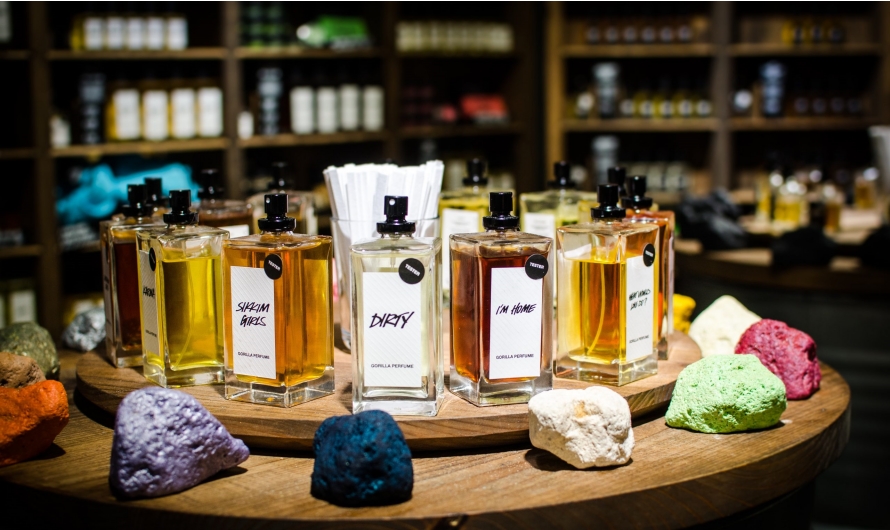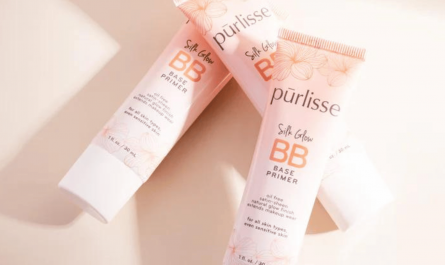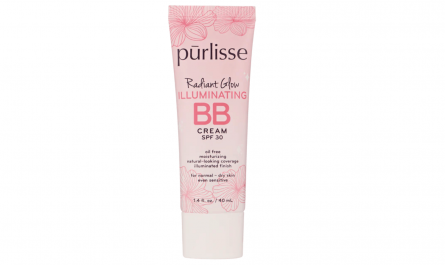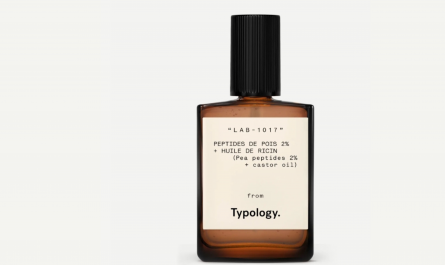Have you ever wanted to create your own unique scent that reflects your personality, mood, and style? If so, you might want to try perfume layering. Perfume layering is the art of combining two or more fragrances to create a custom blend that no one else has. It’s a fun and creative way to express yourself through scent and discover new possibilities.
But how do you layer perfumes without ending up smelling like a mess? What are the best scents to mix and match? And how do you make your scent last longer? In this article, we’ll answer these questions and more. We’ll show you how to layer perfumes like a pro and create your own signature scent.
Benefits of Perfume Layering
Perfume layering has many benefits that make it worth trying. Here are some of them:
- Customizing your scent to suit your mood, personality, and occasion. By layering perfumes, you can create different scents for different situations. You can go from fresh and light for daytime to warm and sensual for nighttime. You can also change your scent according to your mood or personality. For example, you can layer a floral perfume with a citrus one for a cheerful and feminine vibe, or a woody perfume with a spicy one for a confident and mysterious vibe.
- Enhancing the longevity and intensity of your fragrance. By layering perfumes, you can make your scent last longer and smell stronger. This is because different perfumes have different levels of concentration and evaporation. By combining them, you can create a more balanced and lasting scent that doesn’t fade away too quickly.
- Experimenting with different combinations and discovering new scents. By layering perfumes, you can unleash your creativity and have fun with different combinations. You can mix and match your existing perfumes or try new ones. You can also layer perfumes from different brands or categories. You might be surprised by the results and find your new favorite scent.
How to Properly Layer Perfumes
Layering perfumes is not as hard as it sounds. You just need to follow some basic guidelines and tips. Here are some of them:
- Start with a moisturized skin. Before applying any perfume, make sure your skin is well-hydrated and moisturized. This will help your perfume adhere better and last longer. You can use a body lotion, cream, or oil that matches your perfume or has a neutral scent.
- Apply a heavy, strong, or heady base fragrance. The base fragrance is the foundation of your perfume layering. It should be a heavy, strong, or heady scent that can support the other layers. Examples of base fragrances are vanilla, musk, amber, oud, patchouli, and leather. Spray your base fragrance on your pulse points, such as your wrists, neck, and behind your ears.
- Add a warm, soft, or floral middle layer. The middle layer is the heart of your perfume layering. It should be a warm, soft, or floral scent that can complement the base layer and add some dimension. Examples of middle layer fragrances are rose, jasmine, lavender, orange blossom, and ylang-ylang. Spray your middle layer fragrance on your chest, shoulders, and arms.
- Finish with a bright, fresh, or fruity top layer. The top layer is the finishing touch of your perfume layering. It should be a bright, fresh, or fruity scent that can lighten up the other layers and add some sparkle. Examples of top layer fragrances are citrus, apple, peach, mint, and ginger. Spray your top layer fragrance on your hair, clothes, and accessories.
- Spray on different parts of your body or clothes. To avoid mixing too many scents on one spot, you can spray your perfumes on different parts of your body or clothes. This way, you can create a more subtle and layered scent that changes as you move. You can also spray your perfumes at different times of the day to create a more dynamic scent.
- Avoid mixing too many scents or overpowering notes. As a general rule of thumb, you should not mix more than three scents at a time to avoid creating a confusing or overwhelming scent. You should also avoid mixing scents that have overpowering notes that can clash with each other or mask the other layers. For example, you should not mix gourmand, spicy, or aquatic scents with each other or with other scents.
Scents That Go Well Together
If you’re not sure which scents to layer together, you can start with some classic combinations that are known to work well together. Here are some examples:
- Vanilla, musk, and citrus: These are safe and versatile notes that work with most scents. Vanilla and musk add warmth and sweetness to any scent, while citrus adds freshness and brightness. You can layer these notes with any floral, woody, or fruity scent for a balanced and pleasant scent.
- Rose, jasmine, and oud: These are decadent and romantic notes that add depth and richness to any scent. Rose and jasmine are two of the most popular floral notes that have a feminine and elegant charm. Oud is a resinous and smoky note that has a masculine and exotic appeal. You can layer these notes with any spicy, oriental, or gourmand scent for a sensual and sophisticated scent.
- Sandalwood, cedarwood, and citrus: These are woody and fresh notes that balance each other out. Sandalwood and cedarwood are two of the most common woody notes that have a warm and cozy feel. Citrus is a refreshing and uplifting note that has a zesty and energizing feel. You can layer these notes with any floral, herbal, or green scent for a clean and crisp scent.
- Lavender, bergamot, and vanilla: These are soothing and relaxing notes that create a cozy vibe. Lavender is an aromatic and calming note that has a herbal and floral feel. Bergamot is a citrusy and sweet note that has a fruity and tea-like feel. Vanilla is a creamy and comforting note that has a gourmand and cozy feel. You can layer these notes with any musk, amber, or honey scent for a soft and cuddly scent.
Scents to Avoid Layering
On the other hand, there are some scents that you should avoid layering together because they can create an unpleasant or incompatible scent. Here are some examples:
- Gourmand, spicy, or aquatic notes: These are complex and distinctive notes that can clash with other scents or overpower them. Gourmand notes are edible notes that have a sweet and delicious feel, such as chocolate, caramel, vanilla, and coffee. Spicy notes are warm and fiery notes that have a pungent and exotic feel, such as cinnamon, clove, pepper, and ginger. Aquatic notes are fresh and watery notes that have a clean and marine feel, such as sea salt, seaweed, cucumber, and melon. You should avoid layering these notes with each other or with other scents that do not share any common elements or harmonize with them.
- Too many floral or fruity notes: These are overwhelming and cloying notes that can cause headaches or nausea. Floral notes are sweet and fragrant notes that have a feminine and romantic feel, such as rose, jasmine, lily, and orchid. Fruity notes are juicy and tangy notes that have a playful and cheerful feel, such as apple, peach, berry, and citrus. You should avoid layering too many floral or fruity notes together or with other scents that are too sweet or strong.
- Conflicting or contrasting notes: These are notes that do not share any common elements or harmonize with each other. For example, you should not layer a citrus scent with a musk scent, because they have opposite qualities of freshness and warmth. You should also not layer a floral scent with a woody scent, because they have different textures of softness and roughness. You should avoid layering scents that have conflicting or contrasting notes unless you want to create a deliberate contrast or a surprising effect.
How to Make the Scent Last
One of the challenges of perfume layering is making your scent last longer and smell consistent. Here are some tips to help you with that:
- Use body products from the same fragrance range or with similar notes. One way to make your scent last longer is to use body products that match your perfume or have similar notes. For example, you can use a body lotion, shower gel, or deodorant from the same fragrance range as your perfume or with the same base note. This will help your perfume adhere better to your skin and create a more layered scent.
- Apply pure almond oil or unscented lotion before spraying your perfume. Another way to make your scent last longer is to apply pure almond oil or unscented lotion on your skin before spraying your perfume. This will create a barrier between your skin and your perfume and prevent it from evaporating too quickly. Almond oil is especially good for this purpose because it has a neutral scent and a nourishing effect on your skin.
- Reapply your perfume throughout the day as needed. A simple way to make your scent last longer is to reapply your perfume throughout the day as needed. You can carry a travel-sized bottle of your perfume or use a perfume atomizer to spray your perfume on the go. You can also use perfume wipes or solid perfumes for convenience. You should reapply your perfume every few hours or whenever you feel like refreshing your scent.
- Store your perfume in a cool, dark, and dry place. A final way to make your scent last longer is to store your perfume in a cool, dark, and dry place. You should avoid exposing your perfume to heat, light, or moisture, as these can degrade the quality and longevity of your perfume. You should also keep your perfume in its original bottle and close it tightly after each use.
Final Takeaway
Perfume layering is a fun and creative way to create your own signature scent and express yourself through scent. By following some basic guidelines and tips, you can layer perfumes like a pro and discover new possibilities. You can also experiment with different combinations and find what works best for you.
Here are some key points to remember when layering perfumes:
- Start with a moisturized skin
- Apply a heavy, strong, or heady base fragrance
- Add a warm, soft, or floral middle layer
- Finish with a bright, fresh, or fruity top layer
- Spray on different parts of your body or clothes
- Avoid mixing too many scents or overpowering notes
- Use body products from the same fragrance range or with similar notes
- Apply pure almond oil or unscented lotion before spraying your perfume
- Reapply your perfume throughout the day as needed
- Store your perfume in a cool, dark, and dry place
We hope this article has helped you learn how to layer perfumes and create your own signature scent. Have fun and enjoy!
FAQs
Here are some frequently asked questions about perfume layering:
- What is the difference between eau de toilette and eau de parfum? Eau de toilette and eau de parfum are two types of perfume that differ in their concentration and longevity. Eau de toilette has a lower concentration of perfume oil (usually 5-15%) and lasts for about 3-4 hours. Eau de parfum has a higher concentration of perfume oil (usually 15-20%) and lasts for about 4-6 hours. Eau de toilette is usually lighter and fresher, while eau de parfum is usually stronger and richer.
- How can I find out which scents suit me best? There is no definitive answer to this question, as different scents suit different people depending on their skin chemistry, personality, preferences, and mood. However, you can try some methods to find out which scents suit you best, such as testing them on your skin, asking for samples or opinions, reading reviews or descriptions, or taking a quiz or consultation.
- How can I layer perfumes without spending too much money? Layering perfumes can be expensive if you buy a lot of full-sized bottles of different perfumes. However, you can layer perfumes without spending too much money by using some alternatives, such as buying travel-sized bottles, samples, or decants of different perfumes, using body products or essential oils with similar notes, or using perfume subscription services or discovery sets that offer a variety of perfumes for a lower price.
- How can I layer perfumes for different seasons or occasions? You can layer perfumes for different seasons or occasions by choosing scents that match the weather, the mood, or the purpose of the event. For example, you can layer lighter and fresher scents for spring and summer, warmer and cozier scents for fall and winter, floral and fruity scents for daytime and casual events, spicy and oriental scents for nighttime and formal events, etc.
- How can I layer perfumes with my partner or friends? You can layer perfumes with your partner or friends by choosing scents that complement each other or create a contrast. For example, you can layer scents that share a common note or theme, such as vanilla, rose, or citrus. You can also layer scents that have opposite qualities, such as fresh and warm, floral and woody, sweet and spicy, etc. You can also layer scents that have a personal meaning or connection to you and your partner or friends, such as your favorite scents, your first date scents, your birthday scents, etc.




